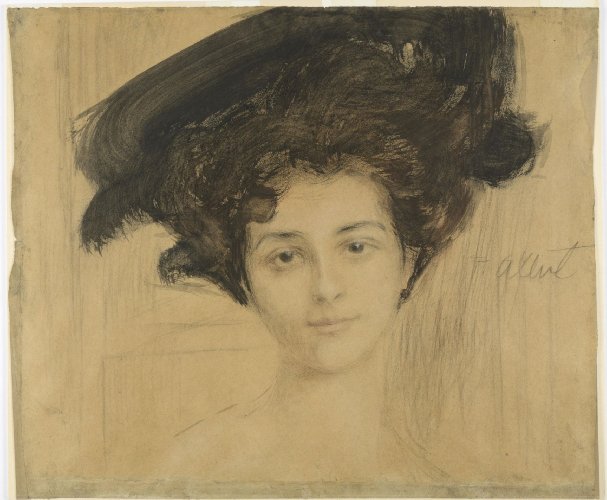Description:
Teodor Axentowicz (1859-1938) gained fame as a portraitist. This theme of presentations fit perfectly into his income-generating activity. Young ladies from the upper classes willingly posed for the renowned artist, who was also accepted in Parisian salons, with the same enthusiasm. On the other hand, this allowed Axentowicz to focus on what seemed to interest him the most, to try to capture the mystery and individuality of the female nature. “Pure femininity is not senses, it is the psychology of gender […] The dominant accent in female heads and heads is the expression. These heads are beautiful, sometimes even very beautiful, as is the case with real women, but Axentowicz never stops at a beautiful mask. He looks for life contained in expression. ”*.
His love of studying femininity also resulted in his interest in female artistic education. In 1897 Teodor Axentowicz established a painting school for women in Krakow **. Among its lecturers were Leon Wyczółkowski or Jan Stanisławski. He recognized the complexity of femininity and the potential for creativity that lay dormant in it, which he intended not only to capture but also to shape.
Description of the painting:
The discussed work, being only an unfinished sketch, allows us to trace the artist’s perception of models. It focuses mainly on their faces. It is in their eyes that one can discover a whole range of dormant emotions. “The women in Axentowicz’s paintings never smile. Their expression is in their eyes. Contemplation, sadness, and often a strong dramatic emphasis shine from the beautiful eyes of Axentowicz’s women. ”*.
On a fragment of gray paper, the delicate outline of a young woman’s bust was captured in pencil. The painter, creating a sketch of a portrait, did not focus on the model’s costume. He meticulously renders the details of the face and headgear of the woman. Her face is framed frontally. Attention is drawn to the eyes looking straight at the viewer, hazel, full of brilliance, illuminating the model’s face. Above them are clearly outlined, black eyebrows. Her lips remain closed. Her dark hair was tied high and covered with a black, simple hat. The slightly tilted head to the right harmoniously coexists with the diagonal hat brim. The woman was portrayed in an undefined interior. Behind her, a fragment of a window frame or shelf was barely outlined.
The expression on the model’s face fully reflects her feelings, she is cheerful, calm and slightly haughty. She focuses on the momentary role she has to take on.


